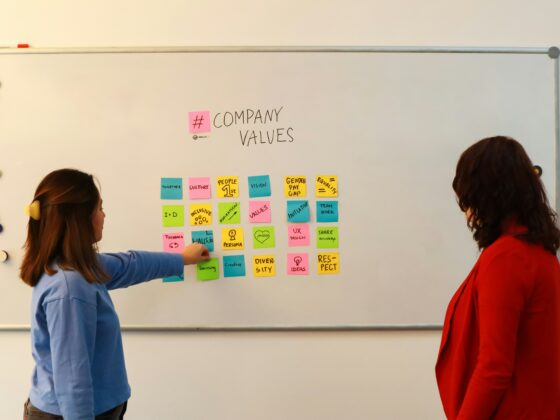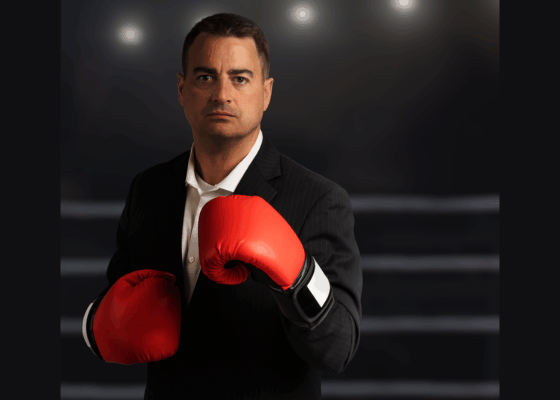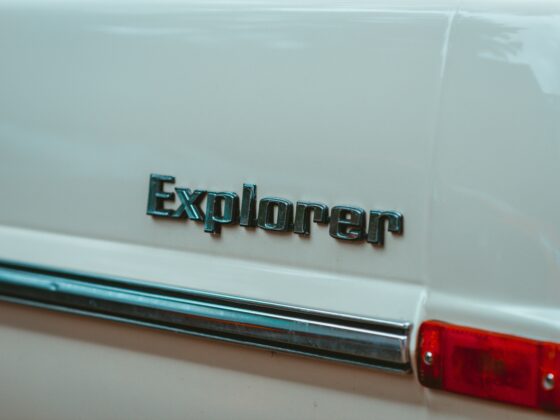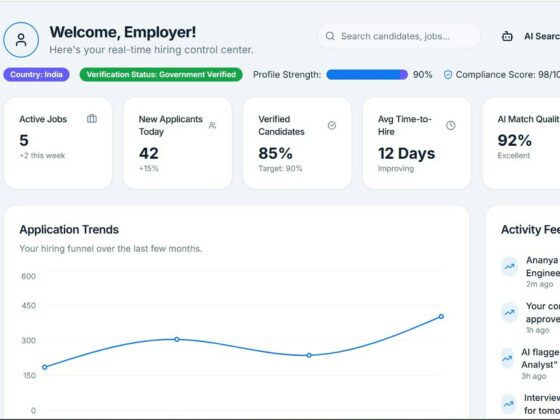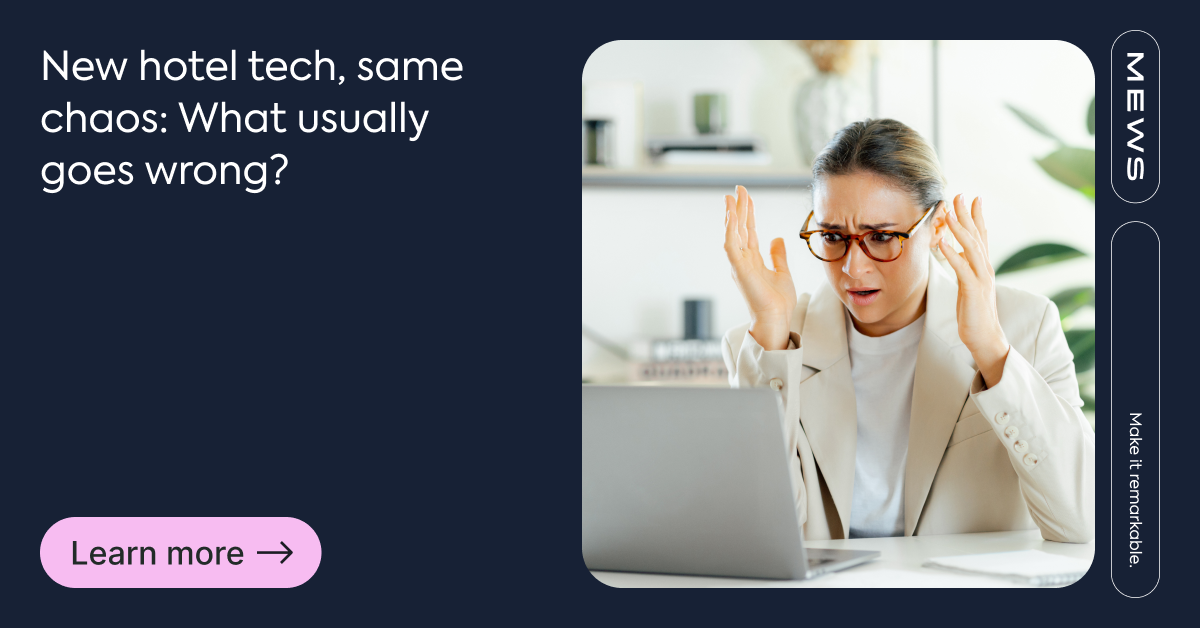
For hotel operators, changing tech is a big decision. It’s months of research, vendor calls, demos, stakeholder buy-in and budgeting.
After putting in all that effort and finally making the switch, it’s natural to expect things to get better. More automation and speed. Smoother workflows. A front desk that doesn’t feel like a battlefield because your new property management system (PMS) just makes sense.
But what if it’s all new tech and no changes, with the same chaos still rearing its head? That’s the reality for many hotels. They invest in better software, but daily operations remain cumbersome, frustrating the staff and guests. If the new system is technically better, why isn’t life getting easier?
Because the tech is only half the story.
A PMS can’t fix what your processes break
It’s a conversation Mews CEO Matt Welle recently had with Claudia Meglin, Director of CMC Hospitality Software. Claudia has consulted many hotels on picking their new tech and deploying it. She says that more often than not, hotels don’t want to change any of their processes but expect technology to solve all their problems. Which is why they end up in the exact same position that made them look for the new tech in the first place.
A new PMS doesn’t fix broken processes, it only makes them more visible. And when those processes are built on clunky habits, half-trained teams and workarounds passed down like family recipes, new tech can feel more disruptive than helpful.
Technology is a tool. But tools don’t drive change – people do.
Understanding your needs
Before choosing a PMS, many hotels look outward. What does the brand prefer? What’s trending? What do others use?
Instead, focus on what your hotel needs. Not just high-level goals like better guest experience or more revenue, but specific operational gaps. How does your team actually work? Where are they getting stuck? What are your guests complaining about?
Too often, that self-assessment never happens. Instead, tech is chosen without involving the people who will use it every day. Operators and front office teams only hear about it once the switch is already in motion.
When that happens, you don’t get buy-in. You get confusion and maybe even sabotage. Because no one likes being handed a tool they didn’t ask for, especially if it changes the way they’ve done their job for years.
The problem with franchise hotels
Franchise hotels often face an extra layer of tech pain. The brand might suggest a PMS, or even push one directly. But they rarely support the operational changes that make it work. So hotels end up with a system that ticks the compliance box but ignores the day-to-day realities on the ground.
You might also be interested: Deflagging your hotel: Is going independent the right decision for you?
You see this a lot in PMS deployments where the brand picks the tool, but the staff are left to figure it out. No one explains why certain settings matter. No one audits the way the team uses the system. It becomes another case of new tech layered on top of old habits.
It’s not always the PMS’s fault. Most platforms today can handle multiple properties, currencies, languages, integrations. But they can’t clean up internal misalignment, outdated SOPs, or fragmented rate structures. That’s still on the hotel.
The “go-live” trap
Another mistake? Thinking the job ends on go-live day. In reality, that’s when the real work begins.
It’s easy to get excited about a clean switch. The PMS is live. The team is trained. Everyone breathes a sigh of relief. But two weeks later, issues start creeping in. Features aren’t being used. Questions come up that no one knows how to answer. The energy dips, and the old ways start to sneak back in.
When you do a system change, people need time to adjust. They have to learn new routines, new ways of thinking. But many hotels don’t build in enough breathing room and don’t ensure adequate training.
Change management doesn’t stop when the system goes live. In fact, that’s when it needs the most attention. Are people using the system as intended? Do they understand the ‘why’ behind each change? Is someone checking in regularly to make sure processes are actually sticking?
Make new tech a part of your culture
Here’s something many hoteliers overlook: software doesn’t become part of your operations just because you install it. It becomes part of your operations when people rely on it. That takes time and intentional design.
If you want your team to stop scribbling notes and start using task automation, you have to make sure those tools are part of their daily rhythm. That could mean:
- Building new SOPs around the system
- Creating internal champions who can support others
- Regular feedback loops to catch issues early
- Celebrating small wins to keep morale high
Technology becomes powerful when it’s no longer “new.” When the front desk team doesn’t have to think twice before using it.
Tech partners vs. tech providers
A PMS is a long-term relationship, rather than a plug-and-play purchase. Your provider needs to be involved beyond just onboarding. They need to understand your property, your goals, your team’s capacity and tailor the rollout accordingly.
When evaluating PMS vendors, don’t just ask about features. Ask how they support change. How they help teams adapt. How long they stay involved after go-live.
Survival guide for PMS migration
If you’re planning a switch, here are some lessons that make a real difference:
- Talk to your team first. Understand how they actually work. What slows them down and what they’ve adapted to over time.
- Cut the clutter. Clean up your rates, categories, rules or anything that’s outdated or unused. Don’t carry over old complexity just because it’s always been there.
- Invest in training. One that goes beyond go-live week. Build internal knowledge that helps the team adapt long-term.
- Expect some mess. A migration will surface issues. Instead of seeing them as a set back – see them as an opportunity to improve.
For more tips on how to switch your PMS successfully, check out our guide:



